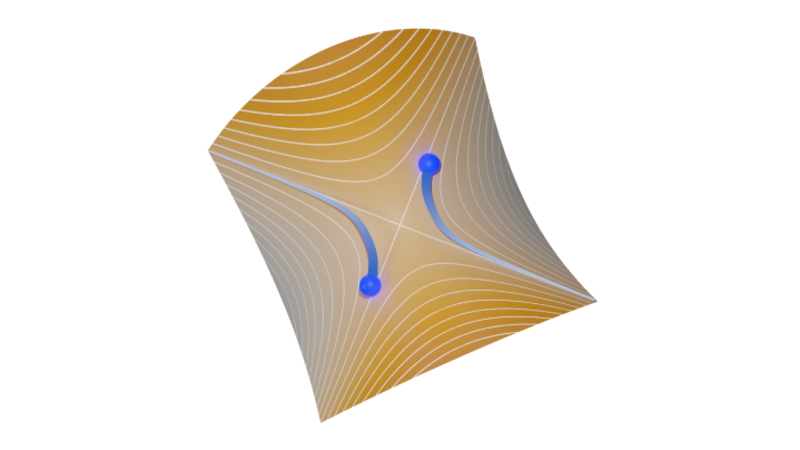
A long-term study shows that recovery of European freshwater biodiversity has stalled since the 2010s. The study was published on August 9 in the prominent journal “Nature”, and its co-authors are Dāvis Ozoliņš, a researcher, and leading researcher Agnija Skuja – both scientists work at the Laboratory of Hydrobiology of the University of Latvia Institute of Biology.
Senckenberg researchers, in collaboration with a large international team, examine the state and development of invertebrate biodiversity in European inland waters in the renowned journal “Nature.” The current study reveals that biodiversity in river systems from 22 European countries has increased significantly over a period from 1968 to 2020. However, the team of scientists warns that this positive trend has stagnated since 2010 and that many river systems have not been able to fully regenerate.
“Additional measures are required to revive the recovery of biodiversity in inland waters – freshwater ecosystems that are and continue to be exposed to serious pressures such as pollution, invasive species, and climate change”, emphasize the authors of the study.
The study includes the river Salaca
Mayflies, stoneflies, and caddisflies are among the diverse group of invertebrates that spend a large part of their lives in the water as larvae. “These and many other invertebrates contribute to important ecosystem processes in freshwater bodies. They decompose organic matter, filter water, and transport nutrients between aquatic and terrestrial environments. Such invertebrates have long been a cornerstone of water quality monitoring,” explains the study’s first author, Prof. Dr. Peter Haase of the Senckenberg Research Institute and Natural History Museum in Frankfurt. Haase continues, “Such monitoring is immensely important because rivers and lakes are subject to major anthropogenic pressures and are among the ecosystems most threatened by biodiversity loss.”
In collaboration with a large international team of scientists, Prof. Dr. Peter Haase and Dr. Ellen A.R. Welti have analysed an extensive dataset. Data were collected between 1968 and 2020 in the river systems of 22 European countries, including analysis of 2,648 taxa and 714,698 individuals from 26,668 samples.
The researchers Dāvis Ozoliņš and Agnija Skuja are co-authors of the publication in journal “Nature” – “The recovery of European freshwater biodiversity has come to a halt. The researchers of the Laboratory of Hydrobiology of the University of Latvia Institute of Biology have contributed long-term research of the river Salaca. The publication reflects the analysis a comprehensive dataset of 1,816 time series collected over a long period of time and concerning benthic invertebrates.
Benthic invertebrates are an important link in food chains that “connect” primary producers to the next levels of the food chain (i.e., predatory organisms), help break down organic material, and are amongst the most representative indicators of the functioning and ecological status of river ecosystems. Ecological studies have been carried out since 1982 in the sites of the river Salaca – Vecate, Mazsalaca and Vecsalaca. Physico-chemical parameters are measured annually, the communities of phytoplankton and benthic invertebrate species are analysed, and the researchers also periodically conducted the analysis the composition of aquatic plant species and river overgrowth. The data series acquired in the river Salaca are unique at the European scale and have previously been used in international studies to infer biodiversity changes and their causes at the European scale (Soto et al. 2023; Pilotto et al. 2020; Jourdan et al. 2018).
The researchers of the Laboratory of Hydrobiology of the University of Latvia Institute of Biology conduct long-term ecological observations in the River Salaca, Riga reservoir and lake Engure. These sites are included in the International Long Term Ecological Research (ILTER) network and the Europe Long Term Ecological Research network.

Wastewater treatment facilities require improvement
The analyses conducted within the study show significant increases in biodiversity over the 53-year period. The number of unique taxa increased 0.73 percent per year, the number of groups of taxa performing different ecological roles increased 2.4 percent per year, and total abundance of invertebrates increased 1.17 percent per year.
“However, these increases occurred mainly prior to 2010 and, unfortunately, biodiversity has remained at more or less constant levels since then. While the increases in biodiversity in the 1990s and 2000s likely reflect the effectiveness of water quality improvements and restoration projects, the stagnant trend that followed suggests that past actions have been exhausted,” adds Haase.
The researchers point out that substantial investments are needed to expand wastewater networks and improve wastewater treatment plants. Targeted efforts are needed to prevent wastewater treatment plants from overflowing during heavy rainfall, and to more effectively remove micropollutants, nutrients, salts, and other pollutants from freshwater systems, the authors say. In addition, the research team advocates for freshwater ecosystem recovery through reducing the input of fertilizers and pesticides from agricultural land, connecting floodplains to reduce destructive flooding, and adapting our river systems to future climatic and hydrological conditions.
“In the future, biodiversity monitoring should be tightly coupled with the concurrent collection of environmental data. This is the only way we can effectively describe temporal changes within biodiversity, identify environmental drivers and high-risk areas, and maximize biodiversity protection!” concludes Haase.


 LU konference
LU konference
